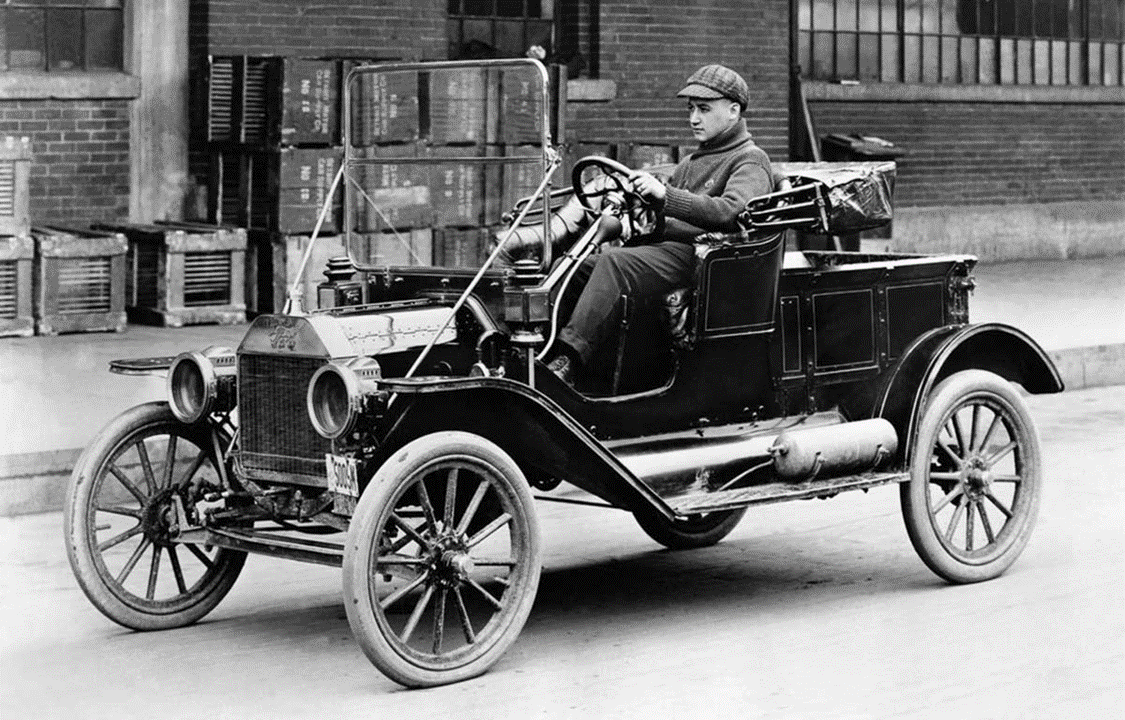Call me Elona or call me crazy, but it’s time AdTech saw a new type of car engine that works transparently and honorably for advertisers.
This now famous/ infamous quote from Henry Ford about his first-generation mass production cars reveal an instinctive understanding that customers like options. Yet his brilliance was understanding that his product was so seductive that despite no options, customers were willing to suspend their normal predilection for options to buy his one-color car. As time went on, there were form and feature introductions but Ford’s one-flavor internal combustion engine was in place for over a century. There was real no innovation for a long time because too many players had too much invested in the fundamentals of the car industry as it was. It took an Elon Musk, an outsider, to change the automobile game.
In some respects, this is where we are in AdTech today.
For twenty years (the equivalent of 100 years in tech years), the first generation of AdTech was delivered in one “color” – tracking and targeting “people” online.
It proved to be so seductive, marketers were willing to suspend their better judgement so they could drive this new marketing car called AdTech.
It’s true that while AdTech has added some form and function features like PII and GDPR, the basic engine – tracking and targeting people – remained the same. Even the planned phasing out of cookies hasn’t become an impetus to reexamine the one-color AdTech engine.
The AdTech equivalent of Elon Musk.
Whoever the Elon Musk is for AdTech, the role is daunting. Like Musk, this disruptor has to change everything – the data, the buying and the ad supply chain. They have to have the stomach to swim upstream against big tech firms and VCs who are deeply invested in this one-color AdTech ecosystem.
What would this new type of disruptor look like? What would a viable alternate AdTech engine look like?
To get anywhere (literally and figuratively), you would have to suspend everything you think you know about AdTech and approach it with the outsider mentality to see clearly where the opportunity lies.
Call me Elona.
Disruptors aren’t born, they’re made. My journey as an AdTech founder was unexpected, having spent decades at large agencies, consumer product powerhouses and tech firms.
I wasn’t an outsider to marketing but I was definitely an outsider to the AdTech world.
My fury at AdTech’s resistance to transparency was overwhelming. The tipping point was when one VC who we had closed with backed out because, as he said; “Judy, you are too invested in client outcomes.” That was code for we were are un-investable. It nearly broke our spirit.
Instead I got even angrier. I wrote endlessly in all the trade outlets: Ad Age, Digiday, Entrepreneur et al (https://muckrack.com/judy-shapiro/portfolio/list) about the lack of real options in AdTech.
Eventually, by the time advertisers did start to ask the tough questions, it had become too complex for any marketer to really vet. The collateral damage was quality and sustainable acquisition marketing.
I could bear it no longer and I became a disruptor. Perhaps it was precisely because I was a tech outsider that I could conceptualize a new type of engine. I was in my Musk moment.
A new type of car engine requires a key insight.
The one disruptive insight that propelled me was hiding in plain sight.
Simply, the Internet is a content serving engine. It was never designed to “serve up” real people digitally.
This concept, Internet as a content serving engine, is disruptive because it rides on content rails — not “people” rails. It was hiding in plain sight because marketers know instinctively that content converts yet AdTech did not embrace a truly content centric approach. My own experience at companies of all sizes and shapes, confirmed again and again the power of content/ topics to convert audiences because topics are closer to real time intent than demographics. Whether it was PPC that delivered leads without any demo targeting or sponsored content that leveraged the power of content to drive trust, a content-centric approach consistently performed to feed the sales funnel.
Yet, despite content’s conversion potential, content-centric channels like PPC operated in limited sandboxes and contextual programmatic media placement was not productive, so the opportunity of Internet as a content serving engine was under-utilized.
Once you adopt that mindset, it becomes clear why everything has to change – the data, the buying and attribution modeling.
This new engine under the hood.
Tesla’s real innovation can only be appreciated once you look under the hood. The same applies here so lets pop open the hood and take a look.
This content engine has three critical components;
1. New type of content/ topic data “fuel”
2. New DSP tech for acquisition digital media buying
3. New topic centric analytics and attribution platform that is easy to deploy and understand
Here is a look at how they work to satisfy the gear heads in the room.
1) A different type of data fuel to power the engine.


The fuel for every AdTech engine is data that tries to tease out how to target people as “cohort groups.” These “cohort groups” are created in different and somewhat convoluted ways by data firms because digital audiences are not easily definable as “real” or with clear demo attributes.
Some data firms develop complex ID resolution solutions. Other DMPs organize the data based on behaviors by reverse engineering which “people” clicked on ads and then trying to find more of those “look-a-like” audiences.
No matter which method is used to target audience, this is where AdTech gets into a heap of trouble because it is achingly difficult to know who is a real person online, much less who is in the right mindset to convert.
More critically, impressions are not a good proxy for “people.” This leaves the door wide open for fraud and a murky supply chain that defies clear auditing. (Don’t get me started on traffic verification firms – they have institutionalized the depth of the problem. Read more here – https://adage.com/article/digitalnext/traffic-authentication-nettlesome-issue-ad-tech/309485)
The new data fuel for our engine is topic data that identifies the topics an advertiser should invest in. It shouldn’t be a guessing game but right now, advertisers have no data way to know what topics have best conversion potential. For optimum operational efficiency, this new topic data works across marketing functions; fueling everything from PPC, SEO, content development and digital media ad buying,
(Head on over to https://topicintelligence.ai/ for a deeper look)
2) A different chassis that buys media differently.

Let’s remind ourselves that the chassis is the backbone of the vehicle. In our new “topic” engine, buying programmatic media is the backbone of all acquisition campaigns. This chassis, or DSP in the engine, has the ability to buy contextual ads so that ads about Father’s Day Gifts are on pages that actually talk about Father’s Day.
“Wait,” you say, “We can do contextual buying now.” Not exactly.
AdTech made no attempt to follow true topic-based contextual matching because it would collapse the “scale” game rapidly.
One can cook up “scalable impressions” that masquerade as real people but AdTech can’t spin up topic-based pages advertisers want to be on. Just like the business model of cars that had many entrenched stakeholders, real contextual matching simply isn’t in the interest of DSPs and exchanges that rely on selling “scale.”
As a result, AdTech contextual targeting answers are meant to assuage advertisers, especially as cookie tracking becomes more challenging, even though it is a far cry from what contextual media placement should be.
The contextual “misses” in today’s DSPs engine.
AdTech uses one of two approaches for contextual targeting in their DSPs, each with limitations.
The first approach is keyword matching via an outside data layer that enriches the buys. This works well only if the keyword means one thing only – like the word Brexit. Trouble is that most keywords do have multiple meanings so a word like “bank” for a financial institution is as likely to be on a page about blood banks and the West Bank than on contextually useful pages about finances. Yes, it is possible to try and do negative keyword lists but within the very narrow lane of keyword matching that is excruciatingly difficult to do on an ongoing basis.
The second approach, Interest Classification, is equally problematic. Interest Classification tends to be broad, often mismatching with the advertiser’s product. If a brand is selling online life insurance, for instance, interest classification targeting is not so clear. So a brand either uses too few classifications or too many. A targeting misfire on both sides.
In an acquisition DSP, the entire approach is different. Topic data for buying threads the needle between these two extremes – keywords that can be too narrow and interest classification that can be too broad.
If an advertiser is selling online life insurance, for instance, the keyword approach thrusts the client into a bloody bidding war with every other life insurance company. Interest Classification, on the other hand, forces an advertiser to pick broad categories, like wealth management, which don’t reveal real-time intent.
Precise topic targeting however, can focus on a highly contextual topic like “family financial wellness” for a better lead outcome than any “people” targeting approach can generate. Noteworthy, this buying model allows for smaller buys given the specific topic but the audiences on these pages are involved in real time.
In this model, CPMs and impressions become irrelevant (Hallelujah). Measurement instead is centered on which topic-based campaigns were best at attracting the most “convertible” types of audiences.
3) A different speedometer that measures attribution and analytics speed.

The speedometer’s equivalent in AdTech is around measuring attribution as feedback for how “fast” the campaign is going. Attribution tech should be measuring acquisitions, leads and conversion — not potentially inconsequential CPMs, Impressions or even clicks.
Yet the “attribution gauges” of today’s AdTech engine are simply too crude and complex to orchestrate systematically when one tries to reconcile campaigns, channels, traffic verification, ID resolution, sales funnel management and conversion.
Imagine an eminently more elegant analytics and attribution model that is simpler because it is topic based much like moving from gas powered engines to electric.
Specifically, imagine being able to understand the ‘topic journey to conversion’ across channels. In doing so, many issues are elegantly addressed. No need to worry about audience privacy because you are chasing topics around the web – not people. No need to use last click attribution models that are achingly underpowered because you are now measuring topic journeys. No need to spend six figures to buy crazy complex ID resolution attribution engines that have less than 50% hit rates.
With a topic-centric attribution platform, advertisers can understand which specific topics, in sequence, had the highest conversion outcomes, freeing advertisers from looking at fragmented and highly inconclusive data.
This type of AdTech engine is an AdTech game changer
As was the case with cars, no one believed Tesla would succeed in overcoming all the technical and operational hurdles inherent in unseating an entrenched paradigm. But Musk did and now Tesla has a valuation exceeding $50 Billion. A topic centric AdTech engine can herald a new era of transparency and performance that has eluded advertisers for too long because the only color they could buy, until now, was black.
If it’s possible for the car industry to adopt a new kind of car engine, then surely digital advertising can evolve as well.
Just call me Elona. Climb aboard and let’s go.





